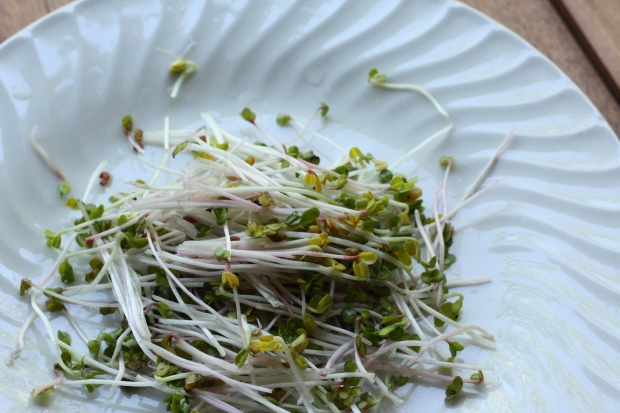 Loading... Please wait...
Loading... Please wait...Save Money. Grow Your Own!
Fast Plain Box Shipping.
We ship to the US & Canada.
Grow Your Own!
Step by Step Guide to Setting Up for Microgreens
Posted on 6th Jul 2016
If you're looking for something new to grow in hydroponics, you might want to check these out.
Microgreens are simply small plants that haven't had a chance to completely grow and mature. Some of them are relatively small plants anyway, but the idea with micro greens is that you harvest them early and get the young sprouts. Microgreens can be eaten by humans and animals -- some hydroponic growers raise microgreens for feeding livestock, crops like alfalfa and barley sprouts. Others grow the kinds of sprouts you might see in a Thai takeout container.
So how do you grow microgreens?
The bottom line is that they're fairly easy to grow with hydroponics. You most likely use a tray table system to grow a large quantity of these greens in a kind of mat or carpet format.

Here are some basic steps to developing a good Microgreens garden.
Prepare trays
Get flat trays and load them with grow media, which you should compact to some extent. Some growers use clay pellets, but you might want to choose a less porous or media for these small gardens.
Measure out seed
You’ll need to be putting a significant amount of seed into each space as you go out along the row of cups or tray spaces. Just like in an outdoor garden, some growers suggest labeling in order to know what you have in the trays.
Moisten trays
You want a little bit of dampness to encourage the seeds to thrive, but not too much water, or you’ll flood the system and possibly wash seeds out of the tray. Here you can use a spray bottle or other mist to just lightly dampen each flat.
Keep seeds dark and warm
Many of those who have done this before recommend growing at about room temperature for the first few days. You’ll be monitoring the seeds to look for signs of sprouting.
Remove the cover
When you have small sprouts, you can remove the covers and put the plants in the light. Photosynthesis will take care of the rest. When you have everything set up right, you should start to see a kind of green carpet or canopy emerging from the trays. You can stack the trays or put them on a vertical swinging set up or otherwise put a lot of these small plants into a small space.

Harvesting
As soon as you get couple of inches of growth and the green carpet looks pretty vibrant, it's time to harvest. Microgreens don't get fully grown, they get harvested right away. You want to wash the greens and get them prepared for storage or shipping.
Many growers like to put microgreens in small bags. These can be tasty in sandwiches and salads or in other dishes.
Microgreens might take, at most, a couple of weeks to grow, so you can keep doing additional plant cycles. Use trial and error to figure out what's the best way to grow these crops in your particular space and climate. Look for signs of a bacterial disease called pythium that's extremely devastating to plants. You also want to look for contamination in terms of bacteria and dirt. Again, washing takes care of a lot of that at harvest time. You can experiment with different kinds of irrigation and nutrient solutions. Over time, you'll come to see what's best for your plants.
Growing microgreens can be a rewarding way to use a hydroponics setup to your advantage.
